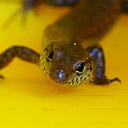Member-only story
Dances with Dragonflies
Beautiful and strange
In the 1880s, a series of fossil insects were excavated from 300 million year old coal measures in central France. One measured 25 cm (10 in) from the head to the tip of the abdomen. Because of its size and shape — long and skinny — it was thought to be a stick insect. French entomologist Charles Brongniart named it Titanophasma fayoli.
Titanophasma was big, but even larger species still crawl through the rainforests of Asia and Australia. Apart from its antiquity, it was nothing to get excited about.
But soon after, more fossils were found, and they told a different story. Titanophasma fayoli was not a stick insect; it was a kick-arse proto-dragonfly with a 60 cm (24 in) wingspan. The species was put in a new genus, Meganeura.
Meganeura wasn’t quite a dragonfly, more dragonfly-adjacent. It probably behaved like modern dragonflies, hunting other insects on the wing. Had it survived to the present day, it might be eating small birds.
The largest species of living dragonflies are about a quarter of the size of those prehistoric creatures. Despite looking for them, I’ve never seen a Giant Petaltail…
